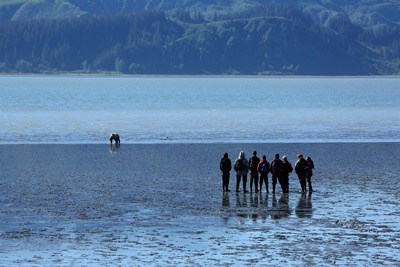
NPS Photo/J Pfeiffenberger In the summer of 2015, the National Park Service embarked on a new multi-year study to investigate the unique link between the terrestrial and the nearshore environment, specifically between coastal brown bears and intertidal invertebrates. Clams and other marine invertebrates are known to be an important food source for coastal brown bears. Natural and human-related pressures can impact the health of these intertidal invertebrate communities, which can in turn affect those species that rely on them. Take a closer look using an interactive story map or read the latest blog posts on the project which detail the on-going research.
|
Last updated: June 29, 2020
